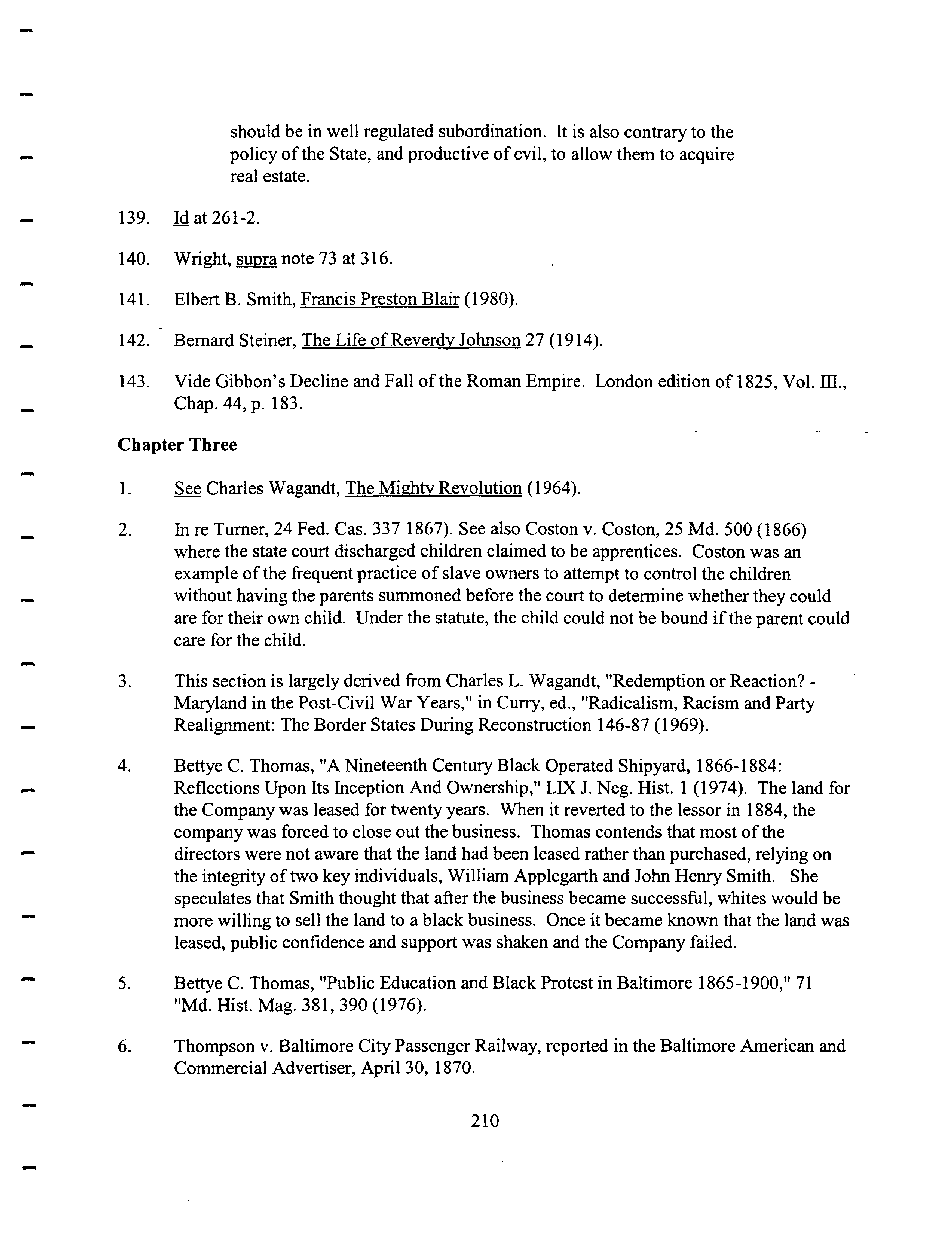|
should be in well regulated subordination. It is also contrary to the
policy of the State, and productive of evil, to allow them to acquire
real estate.
139. Mat 261-2.
140. Wright, supra note 73 at 316.
141. Elbert B. Smith. Francis Preston Blair (1980).
142. Bernard Steiner, The Life of Reverdv Johnson 27 (1914).
143. Vide Gibbon's Decline and Fall of the Roman Empire. London edition of 1825, Vol. HI.,
Chap. 44, p. 183.
Chapter Three
1. See Charles Wagandt, The Mighty Revolution (1964).
2. In re Turner, 24 Fed. Cas. 337 1867). See also Coston v. Coston, 25 Md. 500 (1866)
where the state court discharged children claimed to be apprentices. Coston was an
example of the frequent practice of slave owners to attempt to control the children
without having the parents summoned before the court to determine whether they could
are for their own child. Under the statute, the child could not be bound if the parent could
care for the child.
3. This section is largely derived from Charles L. Wagandt, "Redemption or Reaction? -
Maryland in the Post-Civil War Years," in Curry, ed., "Radicalism, Racism and Party
Realignment: The Border States During Reconstruction 146-87 (1969).
4. Bettye C. Thomas, "A Nineteenth Century Black Operated Shipyard, 1866-1884:
Reflections Upon Its Inception And Ownership," LIX J. Neg. Hist. 1 (1974). The land for
the Company was leased for twenty years. When it reverted to the lessor in 1884, the
company was forced to close out the business. Thomas contends that most of the
directors were not aware that the land had been leased rather than purchased, relying on
the integrity of two key individuals, William Applegarth and John Henry Smith. She
speculates that Smith thought that after the business became successful, whites would be
more willing to sell the land to a black business. Once it became known that the land was
leased, public confidence and support was shaken and the Company failed.
5. Bettye C. Thomas, "Public Education and Black Protest in Baltimore 1865-1900," 71
"Md. Hist. Mag. 381, 390 (1976).
6. Thompson v. Baltimore City Passenger Railway, reported in the Baltimore American and
Commercial Advertiser, April 30, 1870.
210
�
|

